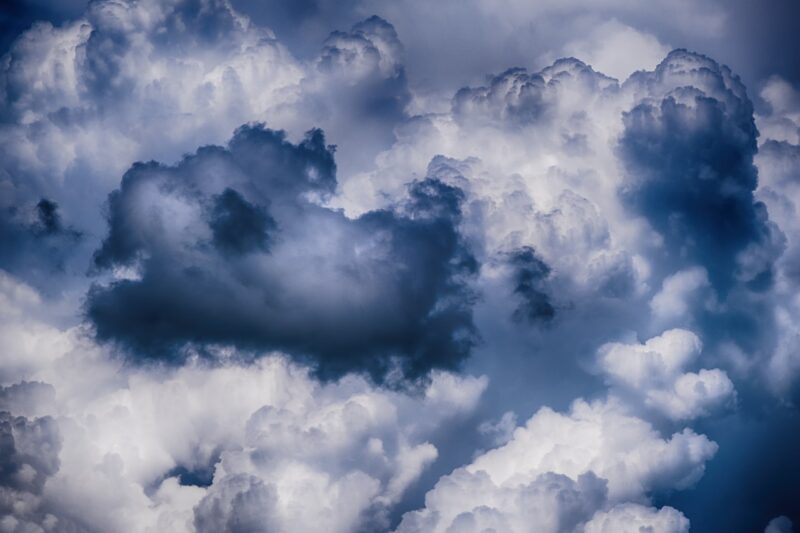
The study of clouds is an art and science that has dramatically influenced our understanding of weather prediction. For centuries, humans have gazed skyward, marveling at the beauty and diversity of clouds. Yet, beyond their aesthetic value, clouds hold the key to understanding atmospheric processes and predicting weather patterns. This article delves into the fascinating relationship between the study of clouds and the development of weather prediction, tracing the historical evolution, scientific advancements, and how cloud classifications have paved the way for modern meteorology.
1. The Historical Perspective: Clouds and Early Weather Prediction
Before the advent of modern meteorology, ancient civilizations relied on their observations of clouds to forecast weather. From the Egyptians who interpreted cloud formations to predict Nile floods to the Native Americans who attributed meanings to various cloud types, these early predictions were often tied to survival and agriculture.
Clouds like cumulus and cirrus were described in folklore; cumulus clouds were associated with warm, fair weather, while cirrus clouds indicated changing weather conditions. Such observations laid the groundwork for what would evolve into a more scientific approach to meteorology.
2. The Formation of Cloud Classification Systems
The 19th century marked a pivotal moment in the scientific study of clouds, thanks largely to the work of English scientist Luke Howard. In 1803, he proposed a classification system that categorized clouds based on their appearance and altitude. Howard’s stratification included the major cloud types we recognize today: cirrus, cumulus, stratus, and nimbus. This classification not only provided a systematic approach to studying clouds but also enhanced understanding of weather mechanisms.
Howard’s influence extended beyond academia; his classification system populary fostered public interest in meteorology. As a result, cloud recognition became a foundational skill for meteorologists, leading to more accurate predictions.
3. The Role of Clouds in Weather Patterns
Clouds are indicators of atmospheric processes. Different types of clouds can signal various weather events:
- Cumulus Clouds: These fluffy, white clouds typically indicate fair weather, but can develop into larger storm clouds (cumulonimbus) under the right conditions.
- Stratus Clouds: These low, gray clouds often bring overcast skies and light precipitation, a warning of damp weather conditions.
- Cirrus Clouds: High-altitude, wispy clouds, indicating moisture at high levels and often signaling an approaching warm front.
- Nimbostratus Clouds: Thick, dark clouds that cover the sky, bringing prolonged and steady rainfall.
Such classifications allowed meteorologists to make weather predictions based on visual observations, an invaluable skill before the emergence of advanced technology.
4. Advancements in Technology: From Observation to Analysis
The 20th century saw significant technological advancements that revolutionized weather prediction. The invention of weather radars and satellites transformed the way meteorologists monitored clouds and weather patterns.
With weather radar, meteorologists could detect precipitation, storm structures, and even cloud rotation associated with severe weather conditions like tornadoes. Satellite technology provided a bird’s-eye view of cloud formations and their movements across vast areas, enhancing real-time analysis and predictions.
These advancements allowed for more precise tracking of weather systems and improved forecaster accuracy. The National Oceanic and Atmospheric Administration (NOAA) and similar institutions across the globe now utilize a combination of satellite imagery, radar data, and computer modeling to predict weather conditions with remarkable accuracy.
5. The Science behind Cloud Formation and Weather Prediction
Understanding cloud formation involves delving into atmospheric science. Clouds form when moist air rises and cools, leading to condensation. This process is influenced by various factors, including:
- Temperature: Warm air can hold more moisture, and as it rises, it cools down, leading to cloud formation when reaching its dew point.
- Humidity: Higher humidity levels increase the chances of condensation, supporting cloud formation and precipitation.
- Air Pressure: Low-pressure areas are typically associated with rising air, contributing to cloud formation and violent weather, while high-pressure areas often lead to fair weather and little cloud cover.
Meteorologists apply this knowledge to create predictive models. By analyzing atmospheric data, including temperature, humidity, and pressure, they can forecast weather by recognizing cloud patterns and formations that correlate with specific weather events.
6. The Future of Cloud Study and Weather Prediction
As humanity progresses, the study of clouds and weather prediction continues to evolve. Researchers are now utilizing machine learning and artificial intelligence to enhance prediction models. These technologies analyze vast amounts of atmospheric data, allowing for improved accuracy in forecasting. Additionally, studies on how climate change affects cloud formations and weather patterns are critical in preparing for future weather challenges.
Community engagement is also vital; encouraging people to observe and report cloud types can enrich databases for more localized predictions. The combination of technology with citizen science can revolutionize how weather predictions are made, providing more precise and accessible information.
Conclusion
The study of clouds has undoubtedly shaped our understanding of weather prediction. Through historical observations, the establishment of systematic classifications, and significant advancements in technology, we’ve progressed from basic forecasts to sophisticated predictive models. Clouds, in their diverse forms, serve as indicators of atmospheric phenomena, allowing us to navigate the complexities of weather forecasting. As we look to the future, integrating technology, research, and community involvement will ensure that our weather predictions are more accurate than ever, aiding us in making informed decisions and preparing for meteorological fluctuations.
Understanding clouds is not just an academic exercise; it is essential for our daily lives, impacting everything from agriculture and travel to disaster preparedness and public safety. As we continue to explore the skies, there’s much more to learn about these majestic formations and their pivotal role in shaping our weather forecasts.








